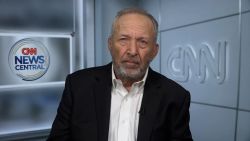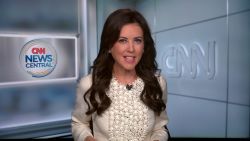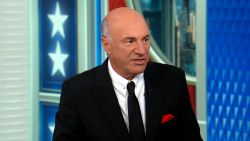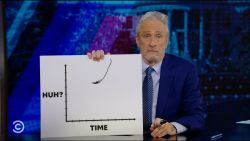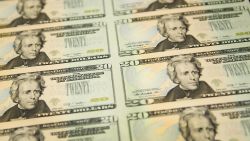A version of this story first appeared in CNN Business’ Before the Bell newsletter. Not a subscriber? You can sign up right here. You can listen to an audio version of the newsletter by clicking the same link.
The global economy is weakening and consumers are feeling financially stressed. Gas and heat prices are up significantly from last year and Federal Reserve Chair Jerome Powell indicated on Wednesday that painfully elevated interest rates will hang around for some time.
It’s rough out there, but there is a silver lining: Persistently high Inflation is showing signs of slowing. Finally.
What’s happening: The Personal Consumption Expenditures price index, the Fed’s preferred inflation gauge, rose 6% in October compared to a year earlier, the Commerce Department reported Thursday. That’s down from 6.3% in September.
“This morning’s data was a Goldilocks report,” wrote Chris Zaccarelli, chief investment officer for Independent Advisor Alliance, in a note Thursday. “If inflation keeps coming down, then markets will keep running higher, as investors will conclude that the Fed won’t need to raise rates as high, or keep them high for as long, as previously expected.”
Inventories of most products are higher, with the notable exception of automobiles, and businesses are pushing discounts. Gas prices also dropped between October and November, which means that inflation could keep slowing.
That’s very good news for investors. In a speech at Brookings Institution in Washington Wednesday, Powell said that the Fed could slow the pace of its aggressive rate hikes as soon as December.
Good news on home prices: Fed spirits should also be lifted by one key change: Annual rent inflation is starting to ease across the United States, rising only 0.4% in October. That’s the smallest monthly increase since February. It also backs key data that shows the housing market may finally be shifting.
The Case-Shiller US National Home Price Index reported this week that price growth dropped from August to September — from 12.9% to 10.6%. Morgan Stanley also slashed its US home prices outlook.
Powell struck an optimistic tone this week. “As long as new lease inflation keeps falling, we would expect housing services inflation to begin falling sometime next year,” he said. That’s significant because housing plays an outsized role in the majority of inflation measures. “Indeed, a decline in this inflation underlies most forecasts of declining inflation,” he said.
What’s next: The consumer price index is expected on December 13, just one day before the Fed makes its next policy decision. This is the “important report of the year,” said Zaccarelli. It “could confirm the downtrend in inflation.” But if inflation surprises to the upside “then all bets are off and we could see a sell-off into year-end – especially if the Fed decides to raise by [three-quarters of a percentage point] the next day, instead of the [half-point] which everyone is counting on.”
What next for jobs?
Investors are eagerly awaiting today’s jobs report, the last before the next Fed meeting, for clues about the future of interest rate policy and the economy.
Economists expect the report to confirm the recent trend of a slowing, but still strong labor market.
Despite a slew of deep cutbacks — primarily at tech companies and other firms that scaled up during the pandemic — and fears that this is the calm before the storm, the broader labor market has barely flinched, reports my colleague Alicia Wallace.
Weekly jobless claims have been a little bumpy but remain at levels seen during healthy economic times. And employees who are being laid off by large firms appear to be quickly finding jobs, said Robert Frick, corporate economist at Navy Federal Credit Union.
The ratio of job openings to job seekers is moving ever so slightly downward — and in the right direction for the Federal Reserve, which is hoping that softer labor demand will help rein in decades-high inflation.
“The relative-softness in higher-wage occupations may comfort the Fed, but wage growth is holding strong for low and middle-income workers whose industries are still facing historic labor shortfalls,” wrote analysts from Vanguard’s economists and investment strategy group in a note Thursday.
That persistent labor supply shortfall seen throughout 2021 is unlikely to fully close any time soon, Fed Chairman Jerome Powell said Wednesday during a question-and-answer session at an economic forum.
The labor market “shows only tentative signs of rebalancing, and wage growth remains well above levels that would be consistent with 2% inflation over time,” he said. “Despite some promising developments, we have a long way to go in restoring price stability.”
US gas is cheaper than before Russia invaded Ukraine
Prices at the pump continue to plunge, dropping the US average for gasoline below where it was when Russia invaded Ukraine, reports my colleague Matt Egan.
A gallon of regular gas now fetches $3.47 nationally, according to AAA. That is below the $3.54 average on February 24, the day Russia invaded Ukraine.
A range of factors have led to the drop in gas prices – and not all of them are positive. Fears of a potential recession and concerns about China’s Covid lockdowns have hurt energy prices.
Other factors include fewer than expected disruptions to Russia’s oil flows and the record-setting release of oil by the Biden administration from emergency reserves.
The bottom line: Gas prices are still relatively high for this time of the year, but looking ahead, some forecasters see gas prices continuing to dip. That could make its way into next month’s inflation reports and lift a large weight off the shoulders of the Federal Reserve.











